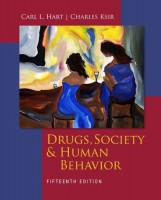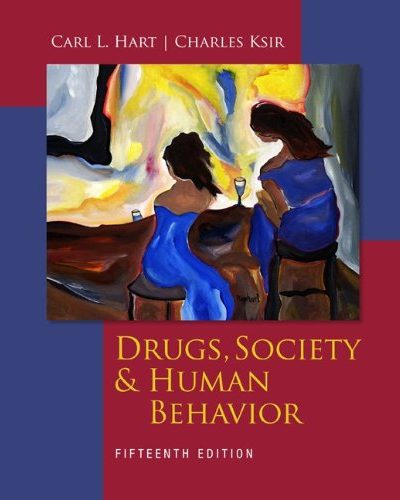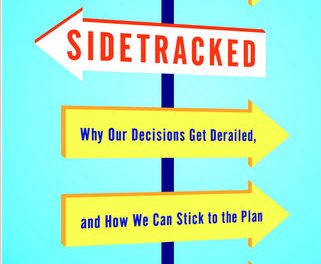 Authors: Carl L. Hart and Charles Ksir
Authors: Carl L. Hart and Charles Ksir
Publisher: McGraw-Hill – 471 pages
Book Review by: Nano Khilnani
This book gives you an outline of, and details on the kinds of drugs being used in society, particularly in the West; what effects each kind have upon behavior; and how to prevent their misuse and abuse.
It looks at drugs and drug use and abuse from several perspectives: behavioral, clinical, historical, legal, pharmacological, psychological, and social.
Recent Alarming Trends
The authors point out at the beginning of this book that the most alarming trend in recent years is the increasing misuse of opioid pain relievers such as Oxycontin and Vicodin. These two drugs have replaced cocaine as the leading cause drug overdose deaths in the United States. They have joined methamphetamine and Ecstasy as the leading drugs being misused and abused.
Content Overview
Below is a list of the seven Sections in this well-organized book that contains 18 chapters. The chapters further outline and detail the material under each Section. For example, under Uppers and Downers you will find one chapter each on Stimulants, Depressants and Inhalants, and Medication for Mental Disorders.
- Drug Use in Modern Society
- How Drugs Work
- Uppers and Downers
- Alcohol
- Familiar Drugs
- Restricted Drugs
- Prevention and Treatment
The first Section provides a theme for this book. It provides you an overview of drug use, drugs as a social problem, and drug policy in general.
Some New Features in this Edition
The current edition has many new features since the last one, among them: statistics on drug use And drug-related mortality rates; toxicity data; expanded brain-imaging section; information about relationship between insomnia and depression; increased discussion of college efforts to reduce the impact of high-risk drinking; discussion of whether negative anti-drug advertisement campaigns are effective at decreasing drug use; and much more.
Focus Boxes
The materials presented in this book are organized well to make absorption and recall easier. One of the important and interesting features provided in the book is Focus Boxes, with colorful graphics, such as:
- Drugs in the Media
- Taking Sides
- Mind/Body Connections
- Targeting Prevention
- Drugs in Depth
- Life Saver
- Unintended Consequences
- Myth Buster
Study Aids
To further improve and hasten learning, this book provides you:
- Chapter Objectives
- Definitions of Key Terms
- Chapter Summaries
- Review Questions
- Appendices
- Summary Drugs Chart
Throughout the book you will find boxes, charts, figures, tables and other items that help in providing you information in easily digestible chunks of information, making study pleasurable and productive.
Indeed the authors Drs. Hart and Ksir have done a marvelous job with this book in terms of compilation, analysis and presentation of knowledge relating to the important subject of drugs and human behavior in today’s society.
Carl L. Hart, PhD is an associate professor of psychology both in the Departments of Psychiatry and Psychology at Columbia University. A major focus of his research is to understand complex interactions between drugs of abuse and the neurobiology and environmental factors that mediate human behavior and physiology.
He is the author or coauthor of dozens of peer-reviewed scientific articles in the area of neuropsychopharmacology and a member of the National Advisory Council on Drug Abuse. He has lectured on the topic of psychoactive drug use throughout the world and has been awarded Columbia University’s highest teaching award.
Charles Ksir, PhD is professor emeritus of psychology and neuroscience at the University of Wyoming. Now retired after 35 years of research and teaching, he has authored or coauthored Drugs, Society and Human Behavior since 1984. He continues to teach a class based on this text via the Internet.







